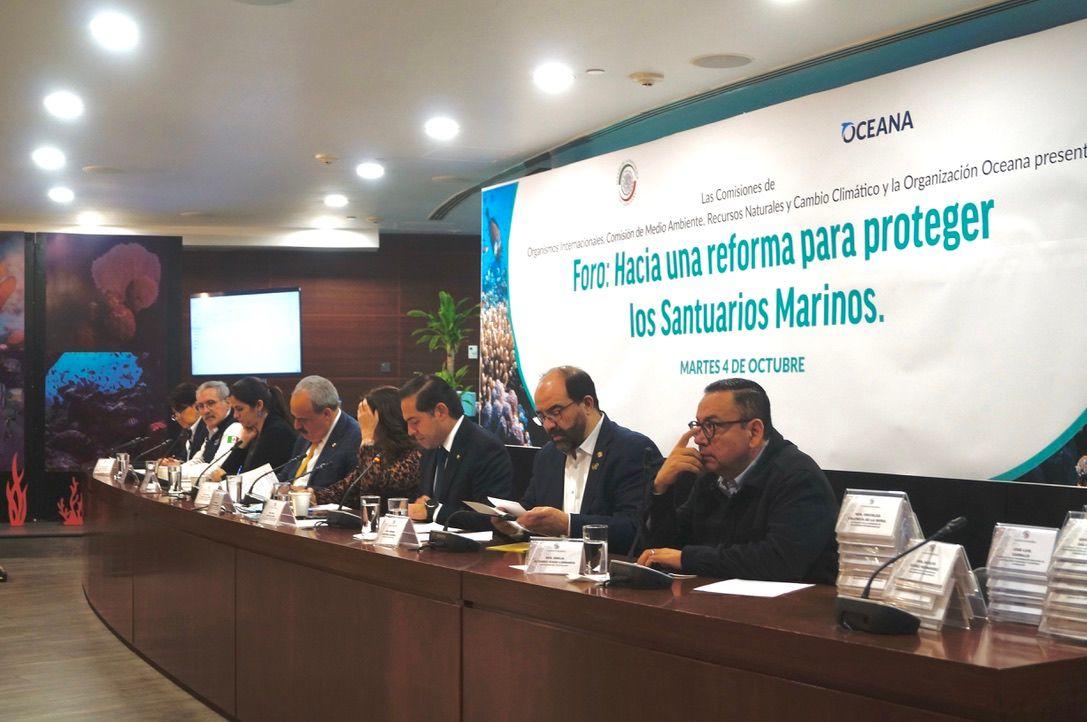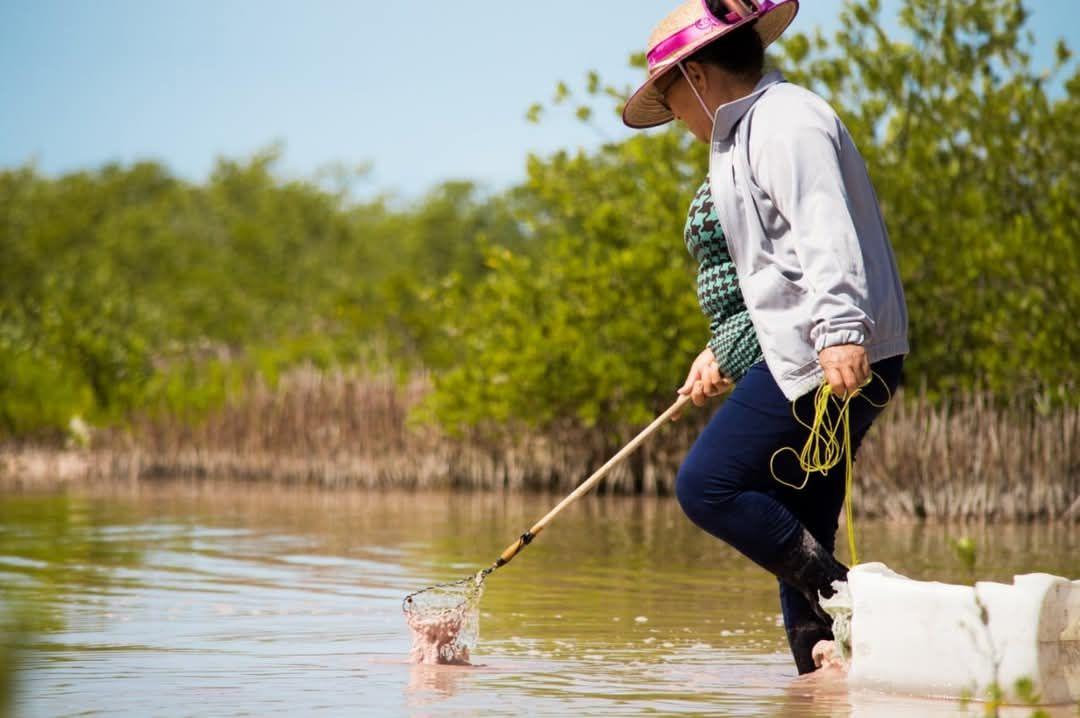In Baja California Sur, 97% of greenfinch is extracted from the Baja California Peninsula. To maintain their exploitation, fishermen and cooperatives on the Comondú coast suspend the catch for 45 days a year to allow the reproduction of the species between July 1 and August 15.
Since 2023, seven cooperatives operating between the La Poza Grande and San Juanico delegations have stopped fishing, just as this fish approaches the coast to spawn.
The measure came about at a first meeting convened by the Puerto Chale Cooperative Fishery Production Society and was later supported by the Federation of Cooperatives of the Gulf of Ulloa.
Fishing for verdillo, together with other species such as blue and red lobster, has historically been the economic support of fishing communities in the area. Thus, the former provides them with income during the months in which these other fisheries are closed.
“A colleague told me: when you go lobster hunting, we keep fishing all year round. When they come back, we're done with it. How about we make a deal and let certain stones rest?” , Aguilar said.
The first tests before the ban were carried out in reference areas such as La Viuda stone, where they stopped fishing for a full year.
“Then we returned and the trap came out full, with up to six hundred kilos in four traps. It was satisfying to see that it worked,” he added.
Since then, says Tomás Camacho Bareño, president of the Fedecoop of the Gulf of Ulloa, seven cooperatives have joined the community agreement, including: La Poza Grande, Barranquitas, Bahía de San Juanico Surf, El Chicharrón, Oleros and Mendoza Unidos.
“Throughout the year, with verdillo trees, there is economy in fishing communities. It's a constant production, a break for the pocket,” says Florencio Aguilar, president of the board of directors of Puerto Chale.

“Before (implementing the suspension of extraction), in those months, the buyer said 'I'll buy it for you seven pesos, after which you take it out close to the shore'. People in need sold it cheaply and at the same time we were affecting reproduction,” Aguilar recalls, because during reproduction, they migrate to shallow sandy bottoms just 1.5 meters deep, where they form spawning aggregations before returning to their original habitat such as reefs, seaweed beds, sandbanks, or rocks, at depths ranging up to 30 meters.
“That's why we agreed to suspend the capture internally and people respected that. With that pause, we managed to make it grow bigger and sell better.”
Declining numbers boosted the agreement
The agreement to suspend fishing for verdillo was also driven by previous irregularity with other high-value species in the region. Florencio recalls that, unlike in the past, lobster and abalone have shown very slow and unstable recoveries that directly affect the economy of cooperatives.
The records of the cooperative itself show how the production of blue and red lobster has enjoyed a slow recovery, but has not reached the levels of yesteryear due to environmental phenomena and population changes.
In the 2021-2022 season, both lobster fisheries (red and blue) totaled 21.9 tons; in 2023, 25.4 tons; in 2023-2024, 32.4 tons, and in 2024-2025, 34.5 tons.
However, the records of both are not parallel. Although the blue lobster showed an uptick, the red lobster declined.
“In the last century there was abundance, we didn't have to go that far and we spent less on catching,” Aguilar recalled. “Today we have to invest more and get less.”
On the contrary, verdillo not only keeps the fishermen who catch it, it also supports entire families ashore.
Aguilar explained that during the season it is common to hire mainly women to clean and gut the fish. “When the boat arrives with a ton of green grass, they do the digging work and are paid per kilo. During the suspension, they were left without that income, but we have managed support from the state government and FONMAR with pantries for families.”
The leader assures that the economic difference is evident: “There are fishermen who reach up to 20,000 pesos in a fortnight of green oil alone. For many, it's more than what they leave with the lobster.”

Greenlet is a thriving resource, but historically undervalued in the market. “It's very abundant, that's why they lower its price... undervalued,” said Martín Oscar Rosales, responsible for the breeding area and the improvement of greenfinch larvae at the Interdisciplinary Center for Marine Sciences (Cicimar-IPN).
Much of the production is channeled to refrigerators in San Diego, from where it is exported to markets in Asia, while in Baja California Sur it is usually marketed under different names.
In the local market, its price is between 110 and 150 pesos per kilo, Martín Rosales attributes this uptick in the product to the fall of other fishing resources such as lobster or abalone.
A replicable example
To date, the community agreement has 135 days of suspended fishing accumulated in three consecutive years. For Aguilar, the most valuable thing is that he has been respected. “The surprising thing is that people trusted and did it. We are a lot of cooperatives and there were no conflicts. That speaks to the fact that fishing can be organized in a community way.”
The experience, he says, is that the ban can be replicated in other areas of the state where verdillo is also dependent. “What motivated us was to take care of the species, achieve good sizes and set a fair price. This way we can make a living from fishing without wasting our efforts. It's an example that shows that we can work together for the resource and for the community.”
José Ortíz distinguishes the case of Puerto Chale from others, where populations have recovered because tourist activities have made locals stop fishing.
“We have the example of Cabo Pulmo, which celebrated its 30th anniversary and it has been seen that the populations recovered, but the point here is that it must be improved for better exploitation, not for tourism,” says José Ortíz with enthusiasm.
Ortíz also mentioned the fishing shelter of Punta San Cosme, in La Paz Bay, where local communities maintain a protective corridor. These examples show that fishing restriction measures, when adopted and respected by the fishermen themselves, can become a model of community management that can be replicated in different regions of the state.
The Verdillo shelter itself has been a factor in state recovery, the figures reveal.
Between 2000 and 2020, there were significant fluctuations in greenish production. In 2012, a maximum of 6 thousand 76 tons was reached, but in 2016 it fell to 2 thousand 804 tons. Since the entry into force of a verdillo fishing shelter on June 23 of that year, state figures have shown a gradual recovery.
Domestication of the greenfinch
Due to the fishing importance of verdillo and its great use in the state, Cicimar-IPN researchers have been developing a project for more than 10 years that seeks to lay the foundations for offering fishing communities quality seeds and productive alternatives in the future.
This is a team composed of Karina Hernández Ibarra, a specialist in genetics applied to aquaculture; Martín Oscar Rosales, responsible for the breeding area and larval improvement; and José Luis Ortíz Galindo, a research professor focused on field conditions on nutrition and water quality due to heavy metals derived from salt mines.

Photo: Emilio Avenaño.
Although so far there has been no reported collapse in the Verdillo population, Cicimar researchers believe that the commitment to alternatives such as aquaculture responds to a preventive vision.
“The resource is not at risk, as far as we know there is no overexploitation or anything like that, but we don't have to get there,” said José Ortíz. The species, native to the Pacific, has shown good growth in captivity and market potential due to its flavor and nutritional value, which opens up the possibility of strengthening fishing communities with new productive aquaculture tools.





Comentarios (0)